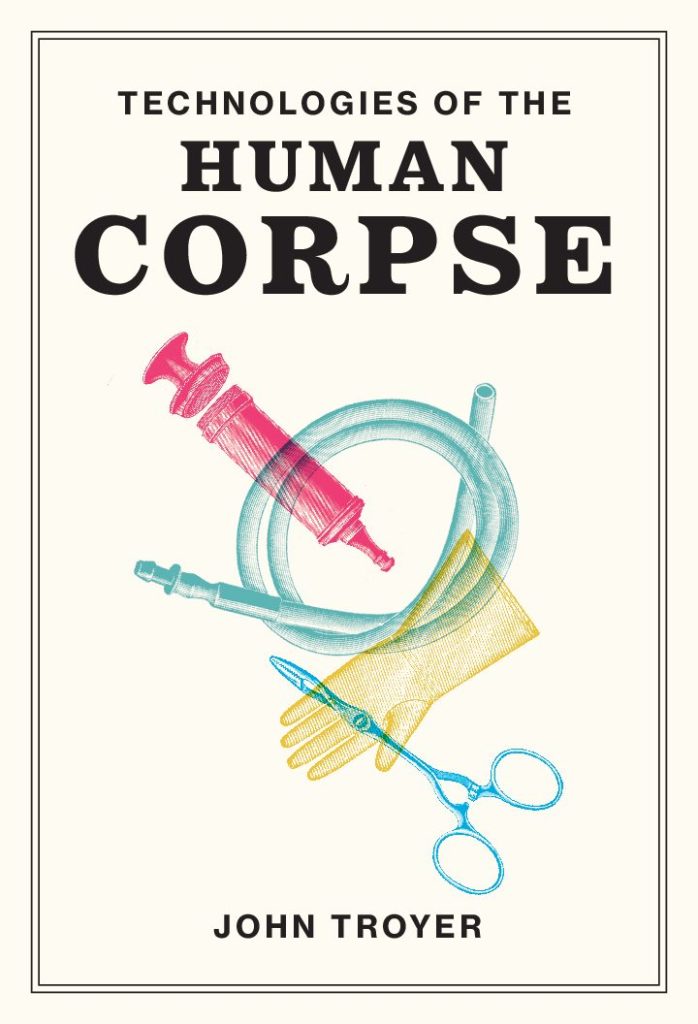
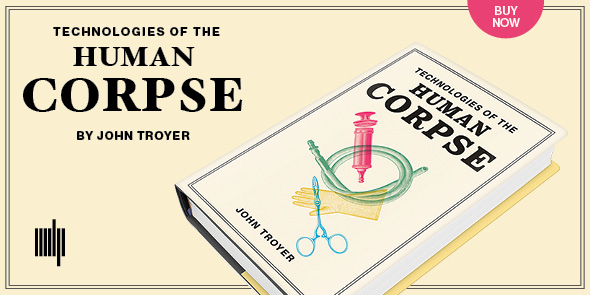
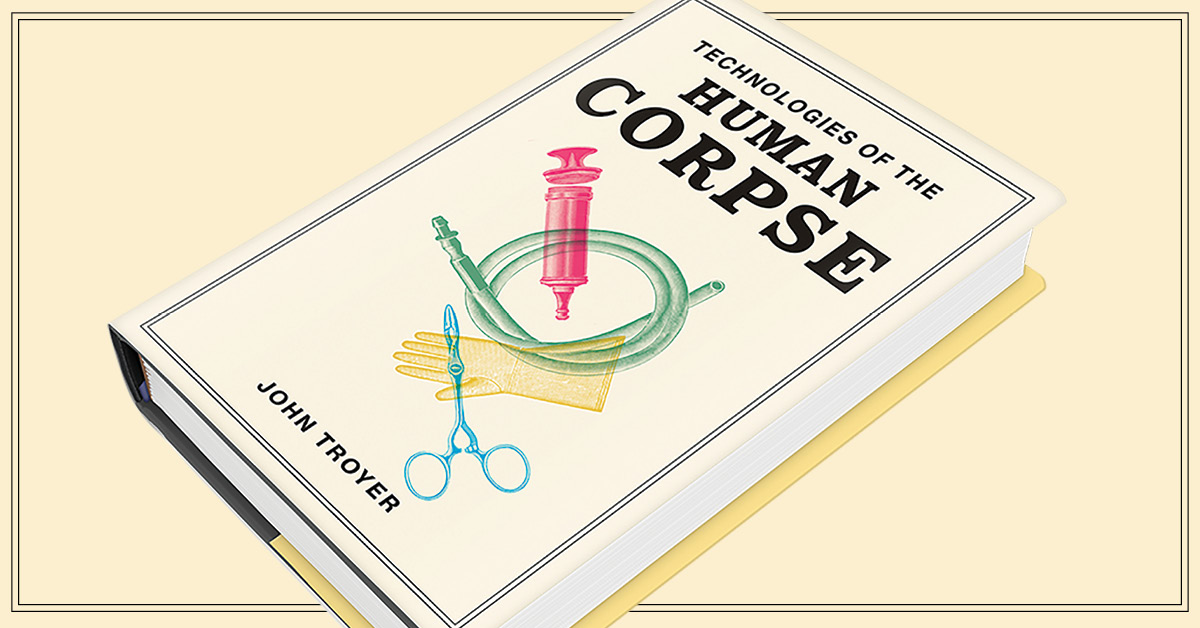


Death Salon LA 2013 Los Angeles, CA (October 18 and 19, 2013)
Our good friends at the Order of the Good Death are putting on an enormous Death Fest next week in Los Angeles. Check it out if you can! And here’s some Death Race 2000 just for fun.
https://www.youtube.com/watch?v=0ZLYEbkykCI
Louisiana Monks Go to Court to Sell Their Caskets
Robert Barnes, Washington Post (May 30, 2012)
Not very long after God told some at St. Joseph Abbey that the way out of financial hardship might be selling the monks’ handcrafted caskets, the state of Louisiana arrived with a different message.
In August 2010, I posted some articles and information about an intriguing legal case in the great state of Louisiana. The case involves a group of Benedictine monks being told by the state of Louisiana that they are not allowed to sell their handcrafted wooden caskets. Robert Barnes excellent article in the Washington Post explains both the backstory and the litigation’s most recent developments.
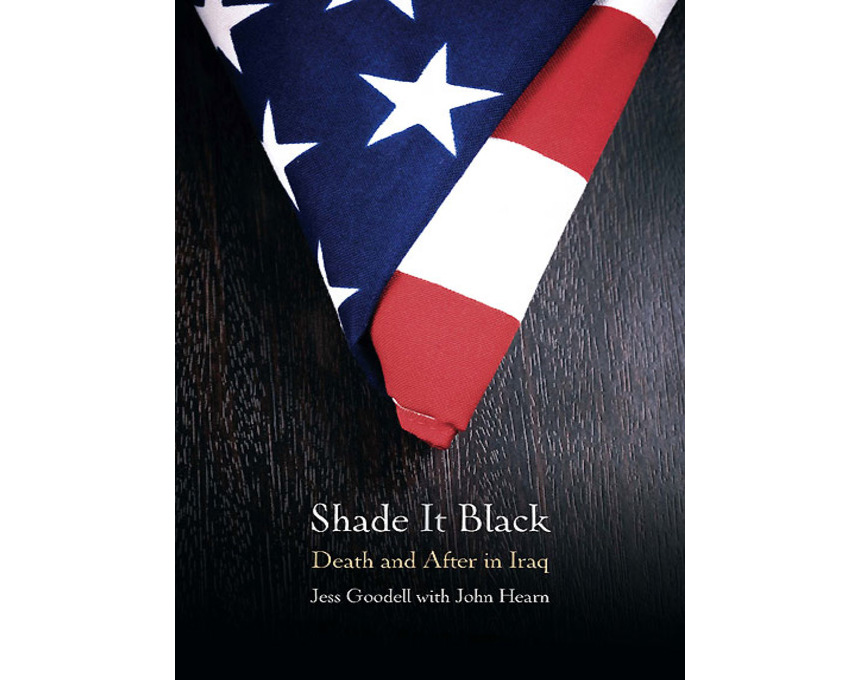
Earlier this week, NPR ran an interview with Jess Goodell, author of the new memoir Shade it Black: Death and After in Iraq. The new book is Goodell’s account of her time as a Marine working in the Mortuary Affairs Unit in Iraq in 2004. Terry Gross interviewed Goodell in a segment entitled Death and After in Iraq: Memoir of a Mortuary, which you can listen to here.
The Mortuary Affairs Unit is the platoon tasked with recovering and processing the remains of fallen troops. Out in the field, Goodell and her unit would recover bodies and body parts and bring them back to base for further processing. Then they would prepare the remains for shipping back home. Back at base, Goodell’s job was to document identifying marks on the body like scars or tattoos, etc. The next step involved going through pockets of the dead soldiers to recover anything that could be given back to the family. In an excerpt from the book, Goodell writes:
He gave us step-by-step instructions. “Roll him over to document his wounds.” We may have known that a Marine was hit by bullets or a grenade, but we may not have known where. But when we tried to turn him over, we couldn’t. Rigor mortis was setting in and he was already beginning to stiffen, except for his waist, which was like a pivot point. Even when we strained to turn him over, we could not. It was awkward and we were silent except for The Sir’s slow, calm, firm instructions. “C’mon guys, you were trained on this and you know what to do,” he reassured us. And so, eventually, we did it. “Okay,” The Sir said, “now write down any distinguishing marks, any tattoos.” So we did. “Now, write down which body parts are missing and shade the missing parts black on the outline of the body.” So we did. We followed The Sir’s directions, marking the wounds, drawing the tattoos, shading the missing parts black. We had to be told throughout what to do next and how to do it.
We don’t yet have a copy of the book at my library, so I have not had a chance to read it. Publisher’s Weekly’s review is here. However, it looks like an interesting read not only for Goodell’s account of her time in the Mortuary Affairs Unit, but her experiences with the brutal and sexist culture of the U.S. Marine Corps. The NPR interview touches a bit upon this aspect of Goodell’s experience as well.
As the author talks about being diagnosed with PTSD, it struck me that perhaps the underlying factors are not only related to the handling of corpses, but the objectification and degradation of her own body as well. In the interview, her measured, almost dispassionate voice made me wonder if parts of her own body and mind had died in Iraq, not unlike the soldiers she was tasked with recovering. The coping mechanisms that the soldiers employ without even really knowing that they are doing so—the turning inward, the antisocial behavior—mask this pain quite well, at least for a while it seems.
At the end of the NPR interview, Goodell talks about her decision to study psychology and her desire to help other soldiers with PTSD, citing the need for more counselors who had personally experienced serving in Iraq.
QR Codes Are Appearing on (Ready for This?) Tombstones
Julio Ojeda-Zapata, TwinCities.com/Pioneer Press (May 20, 2011)
What’s the next best thing to placing flowers on your loved one’s grave marker? Teddy bears? Mylar balloons? Thanks to technology, those items are now passe. The latest way for you to pay your respects is via the QR code. The what??
A recent article in the St. Paul Pioneer Press discusses how Rochester (MN)-based Funeral Innovations is helping to spur the trend of this newly popular technology and hoping it will catch on with funeral directors and the general public.
For the uninitiated—or perhaps those without a smartphone—a QR code is a two-dimensional code readable by dedicated QR code readers and camera phones. In use in Japan since 1994, QR (or quick response) codes are now being used by various individuals, groups and businesses to promote all sorts of things. Advertising, music and business execs are using the codes to give people a value-added experience; scan the QR code and you are transported to a new layer of information about the product, artist or in the case of the funeral industry—the dearly departed.
So how does it work? Well, say Aunt Sally’s family puts one on her headstone. If your smartphone has a barcode reader app installed, you can point the camera on your phone towards the code. The camera then scans the code and relays information to your phone by taking you to a website where more information is available. Maybe it brings up Aunt Sally’s memorial service posted on YouTube or maybe it takes you to an online photo album or a page on the funeral home’s website that includes her obituary or tribute. Snazzy, huh?
QR codes have become the latest topic of discussion where I work. Ever since they made a big splash at SXSW this past year, there’s been a lot of chatter about how libraries can capitalize on this admittedly geeky but cool tech tool. At my library, we’re bandying about the idea of putting them near some of the art and architecture in our historic building. Click the code and voila—access to way more info than we can possibly squeeze onto a tiny plaque placed near the art or architectural feature. At the University of Bath for example (where Death Ref colleague John resides), they are experimenting with using the QR code to “to join up library services with the technology and equipment students use.”
While we must remain vigilant about not alienating those who cannot afford or who have no desire to own a smart phone or barcode scanner, I can see how a technology like this has the potential to be a game changer—a new way of conceiving and consuming information for the masses. But what do you think? Are QR codes the wave of the future or a gimmick best left in the digital dustbin? Let us know your thoughts.
We’ve seen some pretty nasty cemetery abuses in recent months, from Burr Oak to Arlington. Nancy in Texas tipped off the Death Reference Desk about a new bill in the U.S. House of Representatives that will hopefully prevent some anguish and anger in the not-quite-as-horrifically-egregious-as-outright-corpse-abuse-scandal arena but the still important — and affecting many more Americans — area of consumer protection.
Introduced on March 3 by Bobby Rush, D-IL, the Bereaved Consumer’s Bill of Rights Act of 2011 (H.R.900) will institute protections for consumers from “unfair or deceptive acts or practices in the provision of funeral goods or services” (OpenCongress.org).
Read the full text of the bill here. The Funeral Consumers Alliance chews through the legalese with some to-the-point bullets about what the bill will provide:
- Compel cemeteries to give consumers accurate prices before the sale
- Give cemetery consumers the right to buy only the goods and services they want; families will be able to buy markers, monuments, or grave vaults from less expensive retail vendors rather than being captive to the cemetery’s prices
- Bar cemeteries from forcing families to buy entire packages of goods or services, if the family wants to choose item by item
- Require cemeteries to disclose rules and regulations, and consumer rights, before the purchase
- Require cemeteries to keep accurate records of all burials sold, and where remains are interred, and to make those records available to regulators
- Bar cemeteries from lying about the law — claiming state laws “require” vaults to surround an in-ground casket, for example
The FCA is pretty darn excited about this (and so are we). See their site for additional information and links to contact state representatives about supporting this bill.
For the Funeral Too Distant, Mourners Gather on the Web
Laura M. Holson, The New York Times (January 25, 2011)
Webcast funerals reach more friends and family members and reflect the fact that people are living more and more online.
In January 2010, Meg posted some articles and a video about webcasting funeral services. Now, in January 2011, the New York Times is finally catching up to the postmortem future laid bare by ye olde Death Reference Desk.
Yet again, the Gray Lady is reporting on a story that is not particularly new. Or, at least, a new story for the funeral industry. I first read about webcasting funerals in 2002. Indeed, the funeral industry trade journals all discuss webscasting and webpresence and web death (for lack of a better term) nonstop.
The great irony of funeral webcasting (for me at least) is that the modern American funeral developed around waiting for people to arrive for a funeral. One of the reasons embalming became so prevalent in US funerals was that it allowed the preserved dead body to be shipped on a train without decomposing. Embalming also created time for the next-of-kin to arrive for a funeral, without worrying that prolonged travel would cause problems with the body. So, in nutshell, the modern funeral developed around travel time to funerals.
Postmortem Space and Time was expanded.
Webcasting inverts the whole situation. The need for travel time or to ship the body is being greatly reduced. There isn’t anything good or bad with this situation. It does mean that more people will have access to a funeral (given access to the required technology) and that’s certainly better than nothing.
And the webcasting trend is most certainly the future for most funeral services.
The question I always ask myself is this: What is lost by not attending the funeral in person? If anything? Given the choice, I will always attend a funeral in person. My own personal interactions with the other attendees and the deceased individual are important experiences.
I say all this now but I have strong suspicion that in the coming years I will end up “attending” a webcast funeral.
It seems inevitable at this point.
In an effort to find a YouTube video of an actual funeral being webcast I came across the follow advert. This was not entirely what I wanted to use…but it was too good to pass up.
Bringing the Coffin Industry Back From the Dead
How barcodes and touch screens are resuscitating a casket factory
Ben Austen, The Atlantic (December 2010)
Modern, industrial casket making is a manufacturing business like any other, but for the fact that most people never think about modern, industrial casket making. The above article in The Atlantic does an excellent job of capturing how American casket making has become a largely automated industry, similar to the auto business.
This article is also about changes to the American labor force but in a decidedly niche business. It turns out that the American casket industry is suffering from many of the same problems faced by manufacturers all across the country. You can read about many of those death and dead body industries in the Death + the Economy section.
Out of curiosity, I went to YouTube to look for casket/coffin making videos and found the following vintage 1970s film. The YouTube video is actually instructive because it shows how the casket industry used to manufacture caskets before the introduction of the automation technologies.
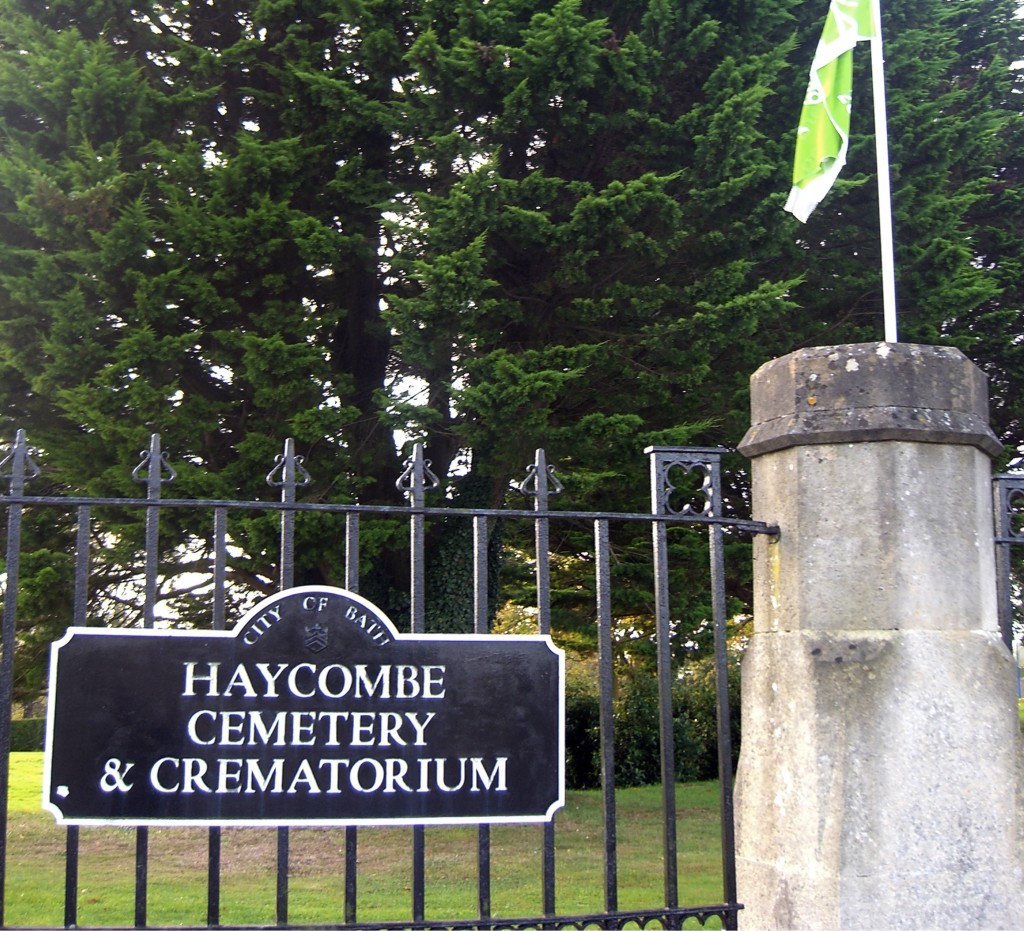
Crematorium to Keep Mourners Warm by Burning Bodies of Loved Ones
The Daily Mail (January 08, 2008)
Eco-Death Articles and Information
Put Together by The Death Reference Desk Cadaver Team (Meg, Kim, and John)
So in January 2008, I read an article in the UK’s Daily Mail about a Manchester crematorium that captured its heat exhaust, filtered out mercury and other problematic materials, and then re-used the heat for keeping the attached chapel warm. The Daily Mail is a notoriously scandal mongering tabloid so it was clear that this story was supposed to cause some kind of outrage. The problem for the Mail was this: no one complained about what the crematorium was doing and, more importantly, people really liked the idea.
I read this article while I was still living in America and well before I knew that I would end up working for the Centre for Death and Society at the University of Bath.
But then I got my current job at the University of Bath and one of the first things I did was start a project which examined how Bath’s local crematorium, Haycombe Cemetery and Crematorium, used heat capture technology.
This is a drastically shortened version of a story which has taken me on postmortem adventures that I never imagined.
So on December 21, 2010 at the Bryant-Lake Bowl Theatre in Minneapolis I am giving a talk about these adventures along with a broader look at the topic of ecologically friendly forms of final disposition.
Or, finding a greener shade of death.
The Bell Museum of Natural History’s Cafe Scientifique program is presenting the talk and I am extremely honored by this fact. Here is the official announcement:
The Ultimate in Going Green: New Research into Postmortem Options
Consumers are increasingly interested in the environmental impact of their personal choices, including their own end of life decisions. John Troyer, Deputy Director of the University of Bath’s Centre for Death and Society, will discuss the environmental impact of traditional burial and cremation practices, as well as new research into crematorium heat-capture technology which eliminates both mercury emissions and offers a potentially viable energy source.
Doors open at 6 p.m.
Food and Drink Available for Purchase
Tickets: $5-$12 Pay what you can
Call 612-825-8949 for reservations
ABOUT THIS MONTH’S SPEAKER
John Troyer received his doctorate from the University of Minnesota in Comparative Studies in Discourse and Society in May 2006. His Ph.D. dissertation, entitled “Technologies of the Human Corpse,” was awarded the University of Minnesota’s 2006 Best Dissertation Award in the Arts and Humanities. From 2007-2008 he was a Visiting Assistant Professor in the Department of Comparative Studies at The Ohio State University teaching the cultural studies of science and technology. John is currently the Deputy Director and Death and Dying Practices Associate for the University of Bath’s Centre for Death and Society. Within the field of Death Studies, he analyzes the global history of science and technology and its effects on the dead body. He is a co-founder of the critically acclaimed Death Reference Desk website (www.deathreferencedesk.org), a frequent commentator for the BBC, and his first book, Technologies of the Human Corpse (University of North Carolina Press), will appear in 2012.
The University of Bath’s Centre for Death & Society is the UK’s only centre devoted to the study and research of social aspects of death, dying and bereavement. It provides a centre for the social study of death, dying and bereavement and acts as a catalyst and facilitator for research, education and training, policy development, media, and community awareness.
ABOUT CAFE SCIENTIFIQUE
The Bell Museum’s Café Scientifique is a program for adults that brings research from the University of Minnesota and beyond into some of the Twin Cities’ most unique and atmospheric bars and restaurants. The Bell Museum’s Café Scientifique explores science and natural history from distinct and surprising viewpoints, drawing connections between scientific research, culture, environment and everyday life.
Café Scientifique is co-sponsored by the Bryant-Lake Bowl.
FOR MORE INFORMATION:
The Bell Museum of Natural History
Outspoken Fla. Democratic Rep. Grayson Unseated
Mike Schneider and Bill Kaczor, The Washington Post (November 02, 2010)
Buried deep in this Washington Post article on the November elections is the following factoid: one of the newly elected Republican Congressmen from Florida is also a Funeral Director. Representative-elect Steve Southerland is part of the Southerland Family Funeral Home in northern Florida.
I need to check and see how many funeral directors have served over the years in both the House and Senate. I’ve been poking around but I can’t find a single source on this one. Now that I’m interested, however, I must know. I will find out and report back.
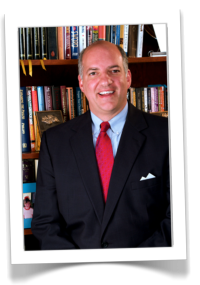 It’s worth noting that Representative-elect Southerland was also a Tea Party backed candidate (according to various news accounts), although I have not seen any official Tea Party literature on the American funeral industry.
It’s worth noting that Representative-elect Southerland was also a Tea Party backed candidate (according to various news accounts), although I have not seen any official Tea Party literature on the American funeral industry.
The National Funeral Directors Association takes a decidedly non-partisan approach with the candidates that it supports and every year funeral directors from all over America arrive in Washington, DC to meet with elected officials.
The Death Reference Desk will keep an eye on Representative Southerland.
We want to know what kind of death he brings to the table.
Eco-friendly or “green” burial methods and practices are the hot topic in the funeral industry and mortuary sciences these days. Everywhere you turn, there is a new book, article or news report on the subject. There is even a Green Burial Council, which touts itself as “an independent, tax-exempt, nonprofit organization working to encourage environmentally sustainable deathcare and the use of burial as a new means of protecting natural areas.” And while the topic has received much attention in popular culture, acceptance of the various practices haven’t reached the all important “tipping point” for true integration into society—at least not yet anyway.
There are literally thousands of links out on the Internet referring collectively to the green burial movement. In doing a quick Google search using the following terms, this gives you a sense of the green burial chatter out there (numbers are rounded up):
“green burial” = 45,000 hits
“eco-friendly burial” = 35,000 hits
“natural burial” = 37,000 hits
So I thought it might be a good idea to review the various final disposition methods considered or referred to as green, natural or eco-friendly. There are actually quite a few different options out there although many funeral homes or mortuaries may only offer one option if they even offer any at all. This is not meant to be a comprehensive list but rather, an overview of some of the most common green body disposition and burial methods. I am making a distinction about the two categories as the former is about how the body is dealt with at final disposition and the latter is about choices made about final placement of the remains.
Disposition of the Body
Promession: The body is frozen to minus 18 degrees Celsius and then subjected in liquid nitrogen. This makes the body fragile. It is then vibrated which causes it to break down into an organic powder. Then it is introduced into a vacuum chamber where the water is evaporated. The now dry powder passes through a metal separator where any metals and mercury are removed. The remains are now ready to be laid in a coffin made of corn starch. The coffin is then buried in a shallow grave in living soil. As a result the coffin and its contents turn into compost in about 6-12 months. A bush or tree can be planted above the coffin. The compost formed can then be taken up by the plant, which can instill greater insight and respect for the ecological cycle. The plant stands as a symbol of the deceased. Source: Promessa
Alkaline Hydrolysis: Alkaline hydrolysis, also known as Resomation (which is a trademarked term) is a process that liquefies rather than burns body tissues. It uses about a sixth of the energy of cremation and has a much smaller carbon footprint, according to Sandy Sullivan, the managing director of Resomation, a company in Scotland that has designed a machine called “the Resomator”. The corpse is placed in a pressurized chamber. The vessel is then filled with water and potassium hydroxide, creating a highly alkaline solution, and heated to 330 degrees. After about three hours, all that’s left are a soft, white calcium phosphate from bone and teeth and a light brown primordial soup of amino acids and peptides. Bodies buried underground decompose in the same way, albeit over many years and aided by microorganisms. Unlike cremation, Resomation doesn’t vaporize the toxic mercury of dental fillings and doesn’t char joint implants, leaving them clean, shiny and potentially recyclable. The bone and tooth material can be ground into a fine ash, as with traditional cremains. The brown liquid, because it’s sterile, can go down the drain. Currently used on research cadavers and diseased animal carcasses, there are various companies exploring the commercial use of alkaline hydrolysis in the disposition of human corpses. Source: The Ninth Annual Year in Ideas (New York Times Magazine)
Embalming-free: Currently, no state or province in North America automatically demands the embalming of bodies. When preservation of the body is specified by state ordinance, refrigeration, chilling or dry ice can often be substituted for embalming. Special circumstances such as an extended time between death and burial, and transportation of remains on commercial airline flights may necessitate embalming. The body can be refrigerated instead of being embalmed with toxic chemicals. If refrigeration isn’t available, ice or dry ice can be used to preserve the body until burial. Embalming fluid is usually comprised of the carcinogenic chemical formaldehyde, which poses health risks to those who work with it. For those who choose embalming, there are now several formaldehyde-free embalming fluids that will adequately preserve the body for up to several weeks. Source: aGreenerFuneral.org
Placement of the Body
Green Cemeteries: A green gravesite is a natural setting more closely resembling a forest floor. Green cemeteries are park-like or woodland/forest settings with acres of natural topography. The natural or green burial method starts with the body preparation which uses no embalming fluid or a nonformaldehyde-based formula. If there’s a headstone, it’s a rock or a piece of rough-cut limestone that’s flat on one side to identify the deceased. Some people plant a tree on the spot. Some methods use GPS coordinates to spot a grave’s location. Caskets are made of wood, plywood, bamboo, cardboard, cornstarch or wicker, etc. Sometimes a shroud or quilt may be used to wrap the body.
Backyard Burial: Not all backyard or personal property burials utilize biodegradable caskets/coffins or involve wrapping the body in cloth or shrouds. However, by choosing backyard burial, families do not contribute to the high maintenance costs and pesticide-laden practices at traditional cemeteries. Perhaps the most well-known burial on personal property is that of the Presley family at Graceland in Memphis, TN. Each state has different laws regarding personal property or backyard burials. Source: various
Biodegradable Coffins: There are numerous biodegradable coffin/casket choices. Some of the most common materials used are bamboo, willow, pine, seagrass, cane, recycled paper and cardboard, untreated jute and natural resin and banana leaf. Unlike traditional caskets which may be made of steel or rare hardwoods and employ fixatives/varnishes, metal hinges, rubber gaskets and paint, biodegradable coffins are made of organic materials, allowing for easy breakdown and decomposition into the soil. Source: Natural Burial Company, ecoffinsUSA et al.
Reef Balls: Reef balls are artificially-designed reefs. They are hollow, concrete structures that are placed on the ocean floor and serve as habitat for marine life. Cremains are mixed with the concrete as the reef ball is being cast. Once hardened, they are transported out to sea via boat where friends and family members are able to participate in a sending off ceremony. Eternal Reefs is one of a small number of companies offering memorial reef balls. The largest “green memorial” in the United States is located in Sarasota, Florida where several hundred Eternal Reefs Memorial Reefs are dedicated. Eternal Reefs have been placed in many locations including waters off of New Jersey, the Chesapeake Bay, Maryland, South Carolina, Florida and Texas. Reff balls are only allowed in properly permitted locations that are approved by the Federal, State, and local governments. The Reef Ball Foundation, Inc. is a 501(c)(3) publicly supported non-profit organization that functions as an international environmental non-governmental organization. The foundation uses Reef Ball artificial reef technology, combined with coral propagation, transplant technology, public education and community training to build, restore and protect coral reefs. The foundation has established “Reef Ball reefs” in over 56 countries with ongoing projects in 14 additional countries. Source: Eternal Reefs, Reef Ball Foundation
Further investigation
Books:
Grave Matters: A Journey Through the Modern Funeral Industry to a Natural Way of Burial by Mark Harris
Going Out Green: One Man’s Adventure Planning His Natural Burial by Bob Butz
Grave Expectations: Planning the End Like There’s No Tomorrow by Sue Bailey
Links: Green Burial Council, Centre for Natural Burial, Natural Death Centre
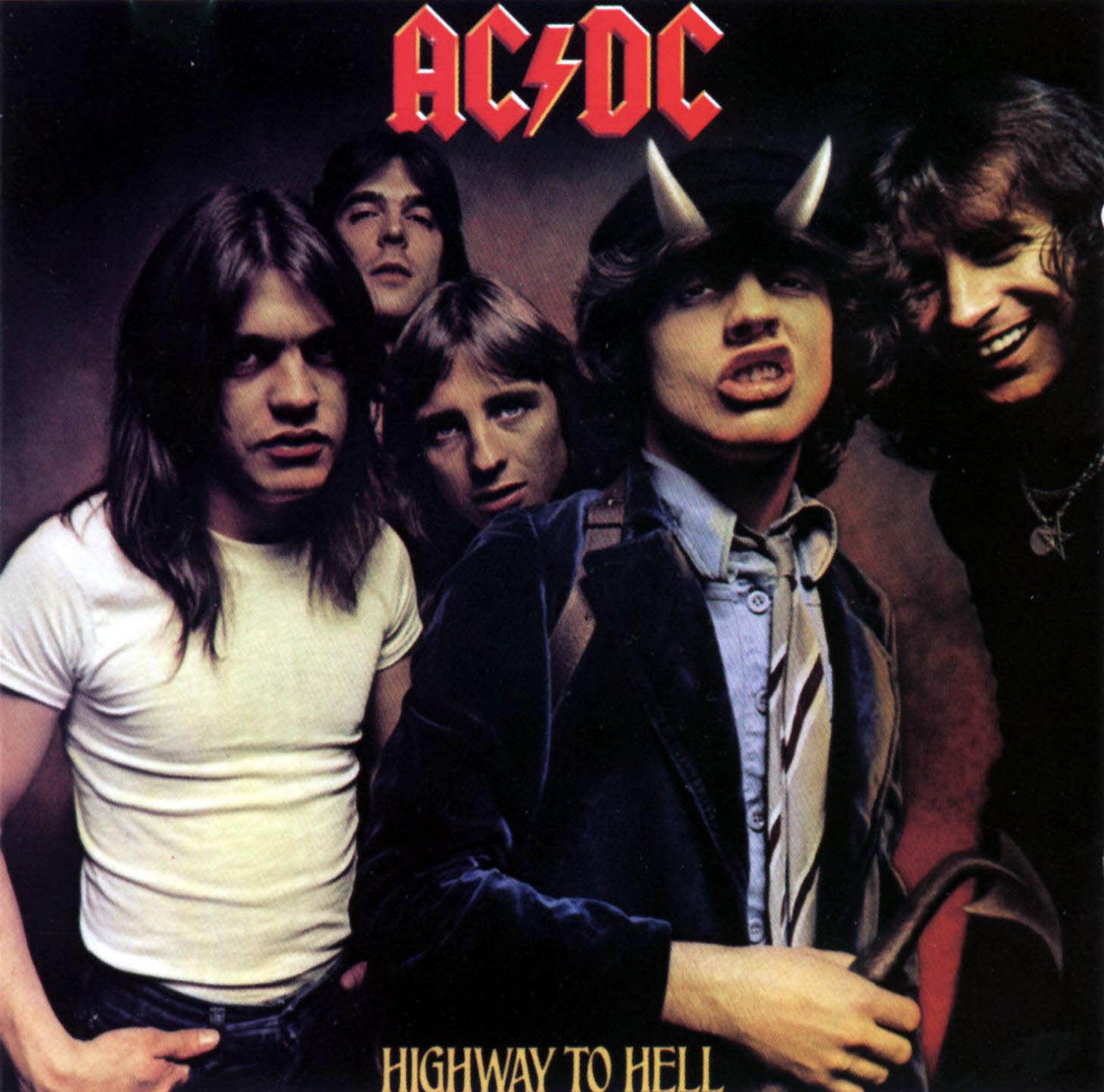
Australia’s Catholic church bans pop songs at funerals
Reuters, Melbourne. September 10, 2010
There is an appointed time for everything. And there is a time for every event under heaven.
A time to give birth, and a time to die; A time to plant, and a time to uproot what is planted.
A time to kill, and a time to heal; A time to tear down, and a time to build up.
A time to weep, and a time to laugh; A time to mourn, and a time to dance.
A time to throw stones, and a time to gather stones; A time to embrace, and a time to shun embracing.
A time to search, and a time to give up as lost; A time to keep, and a time to throw away.
A time to tear apart, and a time to sew together; A time to be silent, and a time to speak.
A time to love, and a time to hate; A time for war, and a time for peace.
(Ecclesiastes 3:1, partial)
Apparently too, there is a time to play pop songs and there is a time NOT to play pop songs.
This past week the Catholic church in Australia sent down an edict banning all pop and rock music and football club songs from funerals performed in their churches. The guidelines, handed down by Archbishop of Melbourne, Denis Hart, were distributed this week to priests and funeral directors. Funerals are to be “sacred farewells”; “life celebrations” should be done before or after the formal service. According to the article:
“The wishes of the deceased, family and friends should be taken into account … but in planning the liturgy, the celebrant should moderate any tendency to turn the funeral into a secular celebration of the life of the deceased,” the guidelines state.
Shheeeeesh!
The article goes on to list the top 10 most popular songs played or sung at Australian funerals. I love that “Ding Dong the Witch is Dead” from the Wizard of Oz made the cut (although is was categorized as a “popular unusual” song).